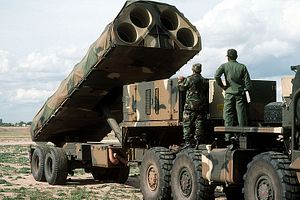Following U.S. withdrawal from the Intermediate-Range Nuclear Forces (INF) Treaty later this year, the U.S. Department of Defense will begin testing new systems that would previously have been prohibited.
According to comments by U.S. officials to the Associated Press, the United States will begin testing two weapons—both armed solely with a conventional payload. The tests are expected to take place at or after August.
One project was described by the Associated Press, which spoke to Pentagon officials, as a “low-flying cruise missile with a potential range of about 1,000 kilometers.” The second missile would be a “a ballistic missile with a range of roughly 3,000 to 4,000 kilometers.”
The cruise missile may be ready for deployment as soon as early 2021, according to the existing timetable. The ballistic missile, however, is likely to take longer. It may be tested as soon as November 2019, but would likely not see deployment for five years after that. Both systems would likely be deployed with the U.S. Army.
The new ballistic missile—a conventional intermediate-range ballistic missile (IRBM)—may see deployment on the U.S. territory of Guam. With a range capability of 4,000 kilometers, it would be able to hold at risk targets in eastern mainland China and the South China Sea.
It’s unclear if the United States will develop an all-new missile booster for the new IRBM or if the payload will be a hypersonic weapon. The precision requirements for the new weapon are unclear too, but given that these will be armed with conventional payloads, both missiles will likely have high precision.
The shorter-range cruise missile would likely need to be based on U.S. allied territory to hold at risk land- and sea-based targets. The United States has yet to consult its regional allies about basing these kinds of missiles.
The INF Treaty, signed by U.S. President Ronald Reagan and Soviet leader Mikhail Gorbachev in 1987 barred both sides indefinitely from possessing any cruise or ballistic missiles—nuclear or conventional—with ranges between 500 km and 5,500 km.
Beginning in 2014, the United States accused Russia of developing a new cruise missile that it said violated the treaty. Russia has denied that the missile—known as the SSC-8 SCREWDRIVER or the 9M729—violates the treaty and has instead alleged that U.S. ground-based missile defense interceptor launchers and armed drones violate the treaty.
U.S. President Donald J. Trump announced that the United States would withdraw from the Treaty due to Russia’s violation on February 1. U.S. Secretary of State Mike Pompeo formally began the treaty-sanctioned six-month withdrawal period of February 2.

































